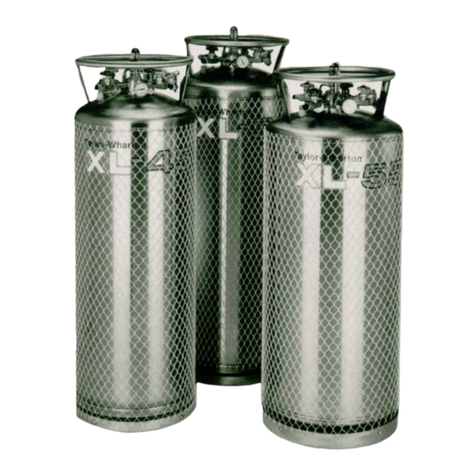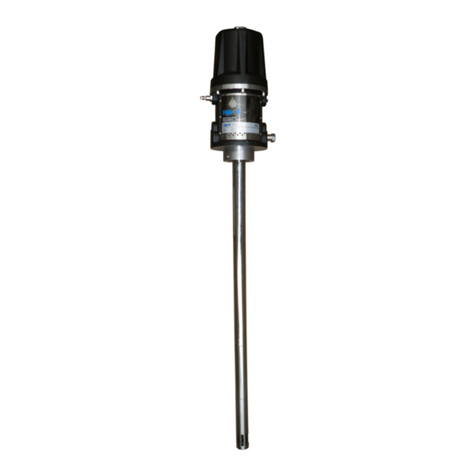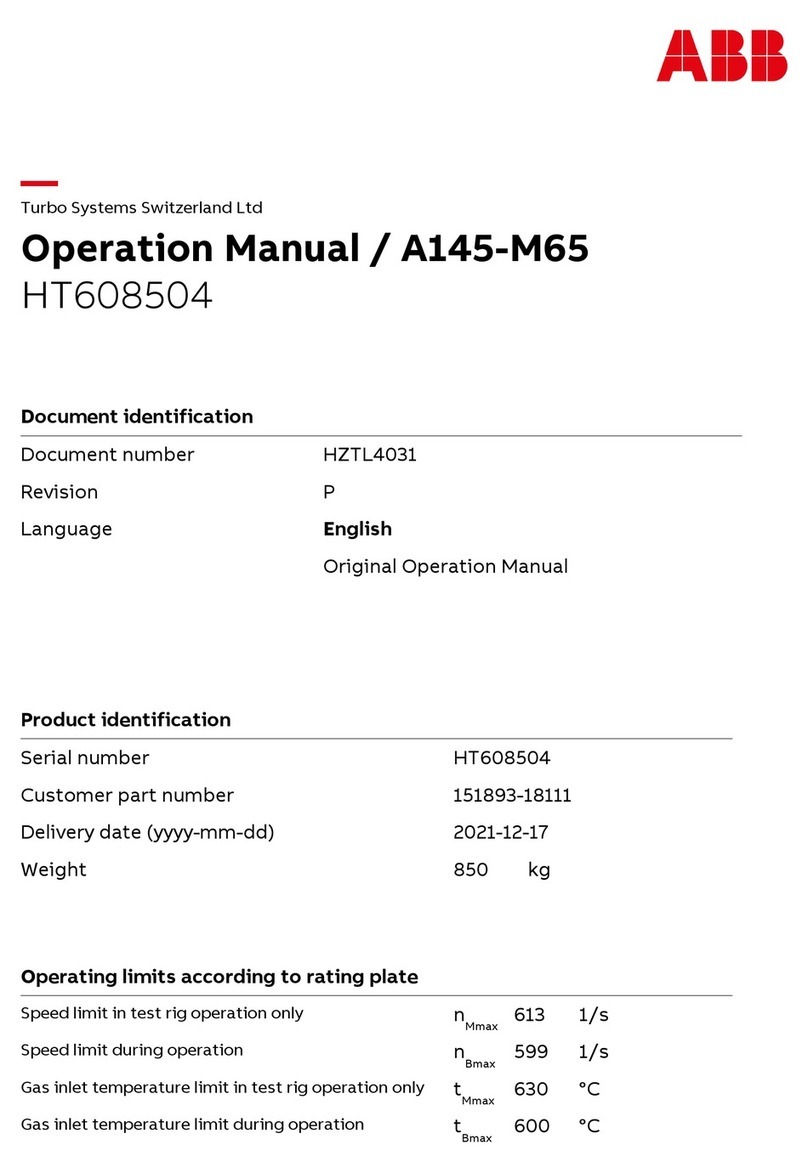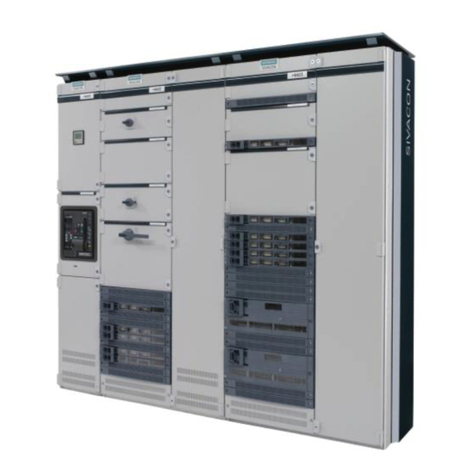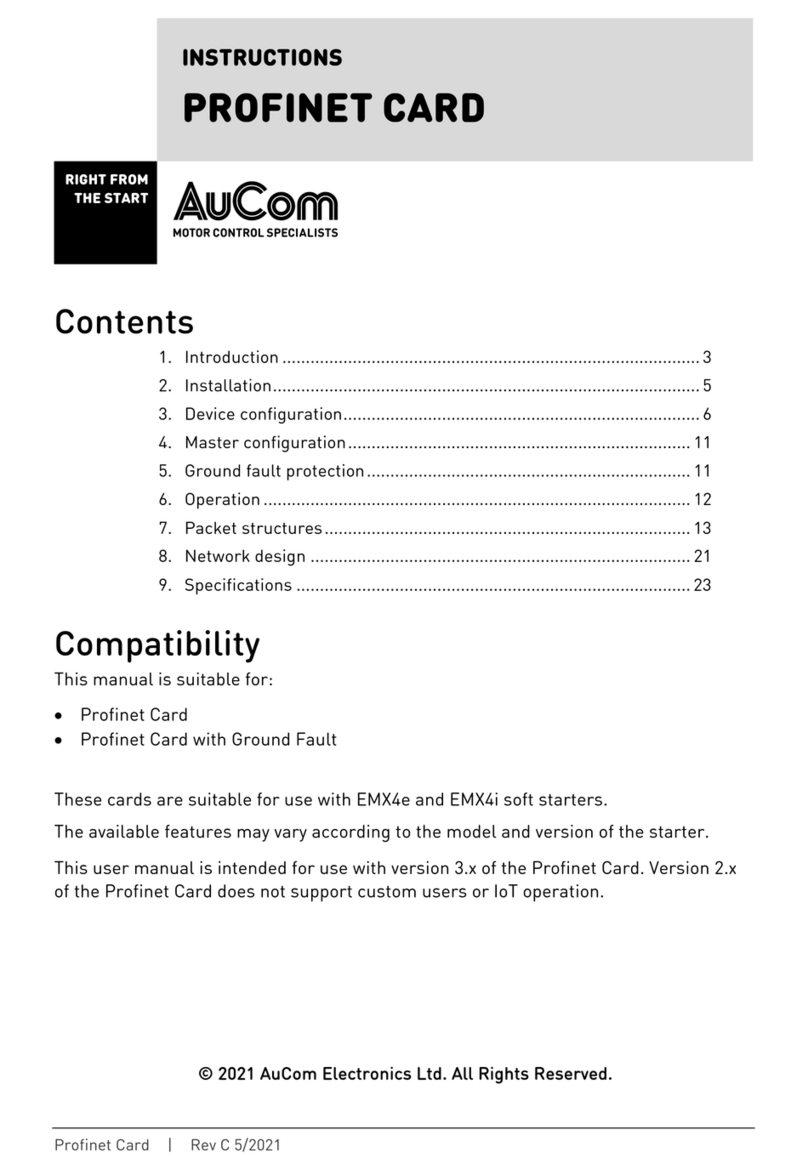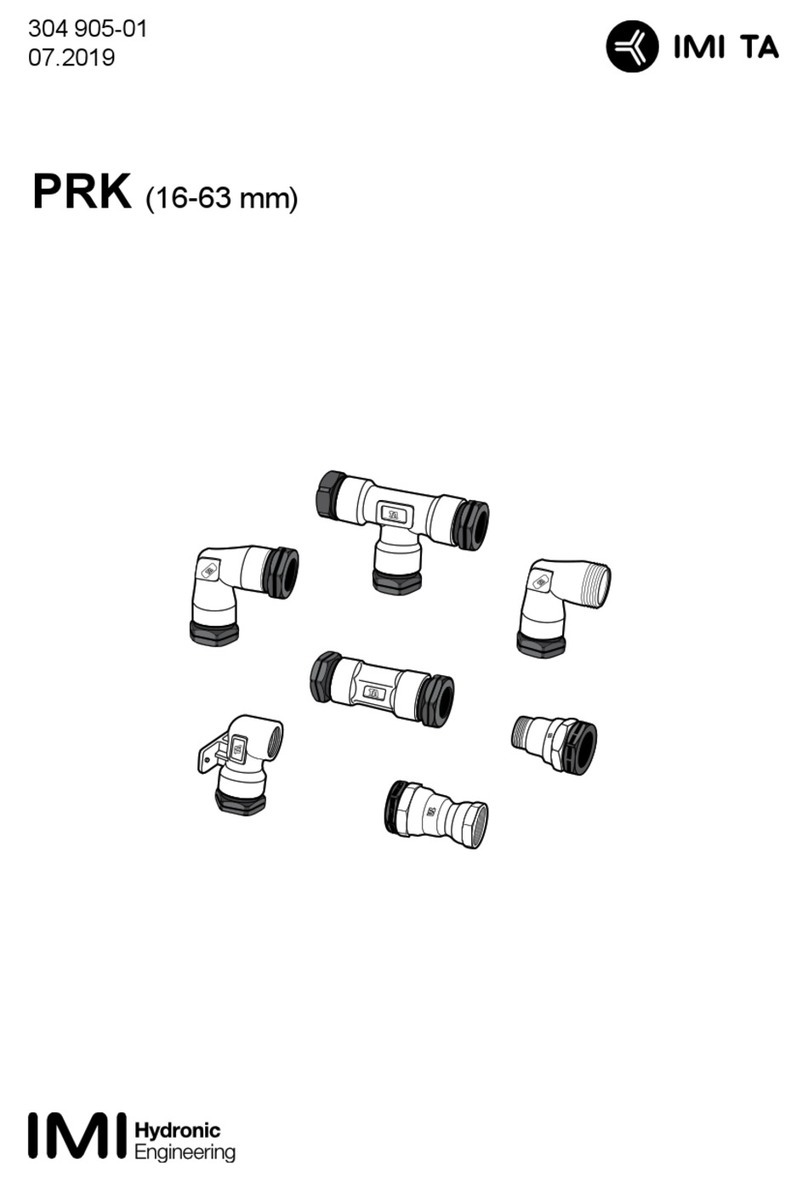Taylor-Wharton M2000 Operating instructions

MB2000/3000/5000 OPERATING AND MAINTENANCE MANUAL
TAYLOR-WHARTON (BEIJING) CRYOGENIC EQUIPMENT CO., LTD.
OPERATING AND MAINTENANCE MANUAL
CRYOGENIC LIQUIFIED GAS TANK
M2000/M3000/M5000/V2000/V3000/V5000 MB TANK
(VESSEL ON SKID)
FOR AIR LIQUIDE
Taylor-Wharton (Beijing) Cryogenic Equipment Co., Ltd.
East End of Ping An Street
Xianghe Economic Development Zone
Xianghe Country, Lang Fang City
Hebei Province, P.R. China 065402
Phone: +86 316 8219770, +86 3168219754, +86 3168219764
FAX: +86 316 8219763

MB2000/3000/5000 OPERATING AND MAINTENANCE MANUAL
TAYLOR-WHARTON (BEIJING) CRYOGENIC EQUIPMENT CO., LTD.
1
TABLE OF CONTENTS
SAFETY PRECAUTIONS FOR LIQUID OXYGEN………………………………………………………… 3
SAFETY PRECAUTIONS FOR LIQUID NITROGEN ……………………………………………………… 5
INTRODUCTION……………………………………………………………………………………………… 6
FUNCTIONAL DESCRIPTION
TANK CONSTRUCTIO………………………………………………………………………………… 9
FUNCTIONAL ……………………………………………………………………………………… 9
INSTALLATION
HANDLING …………………………………………………………………………………………… 10
INSTALLATION CHECKS……………………………………………………………………………… 10
OPERATION
PURGE PROCEDURE ………………………………………………………………………………… 12
FILLING A WARM TANK……………………………………………………………………………… 13
FILLING A COLD TANK……………………………………………………………………………… 13
NORMAL OPERATION ……………………………………………………………………………… 14
TAKING ATANK OUT OF SERVICE ………………………………………………………………… 14
MAINTENANCE
GENERAL …………………………………………………………………………………………… 15
LEAK TESTING………………………………………………………………………………………… 15
HAND VALVES ……………………………………………………………………………………… 15
CONTROL VALVE……………………………………………………………………………………… 15
RESETTING CONTROL VALVES …………………………………………………………………… 16
INNER VESSELAND PIPING SAFETY DEVICES…………………………………………………… 17
PRESSURE AND LIQUID LEVEL GAUGES ………………………………………………………… 17
CASING VACUUM MAINTENANCE ………………………………………………………………… 18
MOVING TANK ………………………………………………………………………………………… 18
TROUBLE-REMEDY GUIDE ……………………………………………………………………………… 20
DIAGRAM
DIAGRAM 1 FLOW DIAGREM …………………………………………………………………… 8
DIAGRAM 2 EQUIPMENT LIFTING DIAGRM ………………………………………………… 11

MB2000/3000/5000 OPERATING AND MAINTENANCE MANUAL
TAYLOR-WHARTON (BEIJING) CRYOGENIC EQUIPMENT CO., LTD.
2
WARNING
FOLLOWING SAFETY PRECAUTIONS ARE FOR YOUR PROTECTION. BEFORE PERFORMING
INSTALLATION, OPERATING, OR MAINTENANCE PROCEDURES READ AND FOLLOW ALL SAFETY
PRECAUTIONS IN THIS SECTION AND IN REFERENCE PUBLICATIONS. FAILURE TO OBSERVE ALL
SAFETY PRECAUTIONS CAN RESULT IN PROPERTY DAMAGE, PERSONAL INJURY, OR POSSIBLE
DEATH. IT IS THE RESPONSIBILITY OF THE PURCHASER OF THIS EQUIPMENT TO ADEQUATELY
WARN THE USER OF THE PRECAUTIONS AND SAFE PRACTICES FOR THE USE OF THIS EQUIPMENT
AND THE CRYOGENIC FLUID STORED IN IT。

MB2000/3000/5000 OPERATING AND MAINTENANCE MANUAL
TAYLOR-WHARTON (BEIJING) CRYOGENIC EQUIPMENT CO., LTD.
3
SAFETY PRECAUTIONS FOR LIQUID OXYGEN
Oxygen is a colorless, odorless, and tasteless gas that can be condensed into a liquid at the low
temperature of -183℃(297℉degrees below zero Fahrenheit) under normal atmospheric pressure.
Approximately one-fifth of normal air is oxygen. As a liquid, oxygen is pale blue in color. Oxygen is
non-flammable but vigorously accelerates the burning of combustible materials.
Keep Combustibles Away from Oxygen and Eliminate Ignition Sources
Many substances, which do not normally burn in air, require only a slight spark or moderate heat to set
them aflame in the presence of concentrated oxygen. Other substances, which are only moderately
combustible in air, can burn violently when a high percentage of oxygen is present.
Do not permit smoking or open flame in any area where liquid oxygen is stored, handled, or used. Keep
all organic materials and other flammable substances away from possible contact with liquid oxygen.
Some of the materials that can react violently with oxygen are oil, grease, kerosene, cloth, wood, paint,
and dirt, which contains oil or grease. Under certain conditions flammable materials, which have become
permeated with liquid oxygen, are impact sensitive and can detonate if subjected to shock.
Keep Area and Exterior Surfaces Clean to Prevent Ignition
As normal industrial soot and dirt can constitute a combustion hazard, all equipment surfaces must be
kept very clean. Do not place oxygen equipment on asphalt surfaces, or allow grease or oil deposits to
remain on benches or concrete surfaces in the vicinity of the oxygen equipment. Use cleaning agents,
which will not leave organic deposits on the cleaned surfaces. Equipment to be used in contact with liquid
oxygen should be handled oLI1y with clean gloves or hands washed clean of oil.
Maintain Adequate Ventilation
Enclosed areas containing oxygen equipment should be ventilated to prevent accumulations of oxygen
and thereby minimize combustion hazards.
Extreme Cold - Cover Eyes and Exposed Skin
Accidental contact of liquid oxygen or cold issuing gas with the skin or eyes may cause a freezing injury
similar to frostbite. Handle the liquid so that it won't splash or spill. Protect your eyes and cover the skin
where the possibility of contact with the liquid, cold pipes and cold equipment, or the cold gas exists.
Safety goggles or a face shield should be worn if liquid ejection or splashing may occur or cold gas may
issue forcefully from equipment. Clean, insulated gloves that can be easily removed and long sleeves are
recommended for arm protection. Cuffless trousers should be worn outside boots or over the shoes to
shed spilled liquid. If clothing should be splashed with liquid oxygen or otherwise saturated with the gas,
air out the clothing immediately, removing it if possible.
Such clothing will be highly flammable and easily ignited while the concentrated oxygen remains, and
should not be considered safe for at least 30 minutes.
Replacement Parts Must be Suitable for Oxygen Service
Many materials, especially some non-metallic gaskets and seals, constitute a combustion hazard when in
oxygen service, although they may be acceptable for use with other cryogenic liquids. Make no
substitutions for recommended spare parts. Also, be sure all replacement parts are thoroughly "Cleaned
For Oxygen Service" in accordance with Compressed Gas Association (CGA) Pamphlet G-4.1 "Cleaning
for Oxygen Service" or equivalent industrial cleaning specifications.
Observe Safety Codes When Locating Oxygen Equipment
Before locating oxygen equipment, become thoroughly familiar with National Fire Protection Association

MB2000/3000/5000 OPERATING AND MAINTENANCE MANUAL
TAYLOR-WHARTON (BEIJING) CRYOGENIC EQUIPMENT CO., LTD.
4
(NFPA) Standard No. 50, "Bulk Oxygen Systems", and with all federal, state and local safety codes. The
NFPA Standard covers the general principles recommended for the installation of bulk oxygen systems
on industrial and institutional consumer premises.
CAUTION: When installing field fabricated piping, make certain a suitable safety valve is
installed in each section of piping between shut-off valves.
For more detailed information concerning safety precautions and safe practices to be observed when
handling cryogenic liquids consult CGA pamphlet P-12 "Handling Cryogenic Liquids" available from the
Compressed Gas Association, 1235 Jefferson Davis Highway, Arlington, Va. 22202.

MB2000/3000/5000 OPERATING AND MAINTENANCE MANUAL
TAYLOR-WHARTON (BEIJING) CRYOGENIC EQUIPMENT CO., LTD.
5
SAFETY PRECAUTIONS FOR LIQUID NITROGEN
Nitrogen is an inert, colorless, odorless, and tasteless gas, which makes up four-fifths of the air you
breathe. Liquid nitrogen is obtained by cooling air until it becomes a liquid and then removing the oxygen,
which makes up the other fifth of the air. Liquid nitrogen is at a temperature of 320℉degrees below zero
Fahrenheit (-196℃) under normal atmospheric pressure.
Extreme Cold - Cover Eyes and Exposed Skin
Accidental contact of liquid nitrogen or cold issuing gas with the skin or eyes may cause a freezing injury
similar to frostbite. Handle the liquid so that it won't splash or spill. Protect your eyes and cover the skin
where the possibility of contact with the liquid, cold pipes and cold equipment, or the cold gas exists.
Safety goggles or a face shield should be worn if liquid ejection or splashing may occur or cold gas may
issue forcefully from equipment. Clean insulated gloves that can be easily removed and long sleeves are
recommended for arm protection. Cuffless trousers should be worn outside boots or over the shoes to
shed spilled liquid.
Keep Equipment Area Well Ventilated
Although nitrogen is non-toxic and non-flammable, it can cause asphyxiation in a confined area without
adequate ventilation. Any atmosphere, which does not contain enough oxygen for breathing, can cause
dizziness, unconsciousness, or even death. Nitrogen being colorless, odorless, and tasteless cannot be
detected by the human senses and will be inhaled normally as if it were air. Without adequate ventilation,
the expanding nitrogen will displace the normal air without warning that a non-life-supporting
atmosphere is present. Store liquid containers outdoors or in other well- ventilated areas.
Dispose of Waste Liquid Nitrogen Safely
Dispose of waste liquid nitrogen out-of-doors where its cold temperature cannot damage floors or
driveways and where it will evaporate rapidly. An outdoor pit filled with clean sand or gravel will
evaporate liquid nitrogen safely and quickly.
CAUTION: When installing field fabricated piping, make certain a suitable safety valve is
installed in each section of piping between shut-off valves.
For more detailed information concerning safety precautions and safe practices to be observed when
handling cryogenic liquids consult CGA pamphlet P-12 "Handling Cryogenic Liquids" available from the
Compressed Gas Association, 1235 Jefferson Davis Highway, Arlington, VA 22202.
NOTE:Argon is an inert gas whose physical properties are very similar to those of nitrogen. For
handling of liquid argon, follow the safe practices described for the handling and use of liquid
nitrogen.

MB2000/3000/5000 OPERATING AND MAINTENANCE MANUAL
TAYLOR-WHARTON (BEIJING) CRYOGENIC EQUIPMENT CO., LTD.
6
INTRODUCTION
This manual provides information for the user to operate and maintain Taylor-Wharton's M2000 and
M3000 and V2000 and V3000 model cryogenic storage tanks. These tanks are suitable for the storage and
delivery of liquid oxygen, nitrogen or argon at a maximum allowable working pressure of 1.6 MPa(232
psig) for M series MB tank or 3.5 MPa(507.5 psig) for V series MB tank. The MB tank with a vaporizer
can be suitable for the 8 hours continuous delivery of 100NM3/Hr gaseous product.
Tank specifications is in table 1, and flow diagram is drawing in this manual .

MB2000/3000/5000 OPERATING AND MAINTENANCE MANUAL
TAYLOR-WHARTON (BEIJING) CRYOGENIC EQUIPMENT CO., LTD.
7
TABLE 1 TECHINICAL DATA
MB2000 SERIES
TANK MODEL
Gross
Volume
(m3)
Net
Volume
(m3)
Height
(m)
Dime-
nsions
(mm)
Weight
(Ton)
Full Weight (Ton) STATIC
EVAPORATION LIN
(volume %/day)
MAWP
(MPa)
LOX LIN LAr
M2000 2.176 1.96 2.799 1350 1.4 3.64 2.98 4.13 <1 1.6
V2000 2.15 1.93 2.799 1350 1.68 3.89 3.24 4.38 <1 3.5
MB3000 SERIES
TANK MODEL
Gross
Volume
(m3)
Net
Volume
(m3)
Height
(m)
Dime-
nsions
(mm)
Weight
(Ton)
Full Weight (Ton) STATIC
EVAPORATION LIN
(volume %/day)
MAWP
(MPa)
LOX LIN LAr
M3000 3 2.7 2.824 1500 2.18 5.27 4.37 5.95 <1 1.6
V3000 3 2.7 2.824 1500 2.4 5.49 4.59 6.17 <1 3.5
MB5000 SERIES
TANK MODEL
Gross
Volume
(m3)
Net
Volume
(m3)
Height
(m)
Dime-
nsions
(mm)
Weight
(Ton)
Full Weight (Ton) STATIC
EVAPORATION LIN
(volume %/day)
MAWP
(MPa)
LOX LIN LAr
M5000 4.99 4.49 3 2000 2.8 7.93 6.43 9.06 <1 1.6
V5000 4.99 4.49 3 2000 3.55 8.67 7.18 9.8 <1 3.5
# BASED ON NET VOLUME,CALCULATION BASED ON LIQUID AT SATURATED @ 0 BAR。
ABOVE ALL SIZES AND WEIGHT IS OLI1Y FOR REFERENCE,AND WILL NOT TO BE INFORMED AT ONCE IF THERE ARE CHANGES。
REMARK:
1、the back pressure regulator PCV3 of the M series tank is setting 1.5 MPa,and setting 3.4 MPa for V series tank 。
2、the build-pressure regulator PCV2 of the M series tank is setting 1.2 MPa,and setting 3.0 MPa for V series tank 。
3、the safety valves PSHV3、PSV2 of M series tank is setting 1.6MPa,and setting 3.5MPa for V series tank。
4、the withdrawing connection RR and gas supply connection BR and gas supply connection BRC is 1/2”FNPT。

MB2000/3000/5000 OPERATING AND MAINTENANCE MANUAL
TAYLOR-WHARTON (BEIJING) CRYOGENIC EQUIPMENT CO., LTD.
8

MB2000/3000/5000 OPERATING AND MAINTENANCE MANUAL
TAYLOR-WHARTON (BEIJING) CRYOGENIC EQUIPMENT CO., LTD.
9
FUNCTIONAL DESCRIPTION
TANK CONSTRUCTION
The MB tanks are vertical tanks with a maximum allowable working pressure of 1.6MPa (232 psig ) for
M series tank and 3.5MPa (507.5 psig ) for V series tank. The pressure vessel is suspended inside a
vacuum jacket by neck-tube, and with super insulated of multilayer inorganic glass-fiber nonwovens and
aluminum foils under high vacuum. All piping is designed to withstand the stresses caused by expansion
and contraction of the pressure vessel, its support system and piping itself.
The pressure vessel is designed and constructed in accordance with the ASME Boiler and Pressure Vessel
Code Section VIII, Division 1. The inner vessel and outer vessel is constructed of 304 staiLI1ess steel and
the piping is staiLI1ess steel.
The tank evacuated to a high vacuum through a PSE3. The PSE3 will be closed down automatically after
pumb-vacuum. DO NOT OPEN the PSE3.
MAIN PARTS FUNCTIONAL
FILLING CONNECTION(FC)a device to prevent filling the vessel with the wrong product, each product
(LIN/LOX/LAR) have its own standard fitting.
CHECK VALVE CUSTOMER (CVl)
prevents flow out of the tank through the valve;
BOTTOM FILL VALVE(HV1)while filling through the valve tends to increase tank pressure;
TOP FILL VALVE(HV2)Filling through the valve tends to reduce tank pressure;
FULL TRYCOCK VALVE(HV5)used to determine fill termination;
GAS SUPPLY VALVE(HV100)Product use valve, it locates the outside of atmospheric vaporizer line outlet,
it shut off or open the product to use high quality gas.
BOTTOM LIQUID VALVE(HV18)provide liquid oLI1y withdrawal from the tank。
PRESSURE BUILD-UP VALVE
(HV3)
It lets the liquid of the container flow to the build-up pressure line when it is
opened.
PRESSURE REGULATOR(PCV1)When tank pressure decreases to PCV1 set-point , it opens and liquid flows
from the bottom of the tank through;When tank pressure increases above the
regulator’s set point it closes and the pressure building process stops
RESSURE BUILDING COIL(E1)This liquid product is vaporized in the coil and expanded gaseous product
returns to the top of the tank maintaining tank pressure;
ECONOMIZER REGULATOR VALVE
(PCV3)When tank pressure exceeds the set point of PCV3,the gas will flow from the
top of the tank through CV2 and finally exits through 。
BACK PRESSURE REGULATOR
VALVE(PCV3)When tank pressure exceed PCV3 set-point , it opens and pressure reduce .it
can prevent PSV1 and PSV2 frequent action and let it works longer.
SAFETY VALVE(PSV1,PSV2)OvePCV1ressure protection for the pressure inner vessel,The pressure relief
valves provide primary protection for the inner vessel;
VACUUM BURSTING DISC(PSE3)The tank vacuum jacket is protected from ovePCV1ressure。
BURSTING DISC(PSE1,PSE2)OvePCV1ressure protection for the pressure inner vessel, the rupture disks
are secondary safety devices。
ESAFETY LINE PURGE VALVE
(HV14,HV15)It releases the high pressure gas of safety line when replace safety valve
PSV1 or PSV2,and can be one connector to withdrawing gas to test .
TANK PRESSURE GAUGE(PI1)Tank pressure is indicated by PI1;
LIQUID LEVEL GAUGE(LI1)percentage based on calibrated in inches of water and a conversion chart
located next to the liquid level gauge is used to convert the gauge reading to
volume of liquid。
GAS ISOLATION VALVE(HV9)a bypass valve connecting the instrument lines should be installed between
the isolation valves and the device;
LIQUID ISOLATION VALVE(HV11)
connected to a pressure tap attached to the bottom to the pressure vesse:

MB2000/3000/5000 OPERATING AND MAINTENANCE MANUAL
TAYLOR-WHARTON (BEIJING) CRYOGENIC EQUIPMENT CO., LTD.
10
EQUALIZATION VALVE(HV10)To balance the pressure of liquid phase and gas phase ,the NI will be zero
when it is opened.
VACUUM PUMP
DOWNCONNECTION (PSE3)
the port used to pump air from the tank insulation space. It is normally
blanked-off and never opened uLI1ess the tank requires a field
re-evacuation after a repair;
VACUUM PROBE VALVE(HV8)a thermocouple that is installed to allow connection of a vacuum gauge to
measure the quality of the vacuum in the insulation space;
VACUUM PROBE(VJ)opened during vacuum measurement to expose the vacuum probe sensors to
the tank insulation space。
FILL LINE PURGE VALVE(HV17)used to vent the fill line during fill hose cool-down, and to drain liquid
product trapped between the fill connection and the fill valves after a fill is
completed。
ATMOSPHERIC VAPORISER(E100)
One heat exchanger that absorbs heat energy of around atmosphere and
make the liquid vaporize gas .
INSTALLATION
HANDLING
Dimension and connection data for the MB tanks can be found on additional copies of these drawings
may be requested from the factory. Please include information on the tank model number and part number
in making requests for this drawing. The drawing part number is listed in the applicable Specification
chart in this manual.
Tank installation is the customer's responsibility. The MB tank with pallet for equipment to hand or transit
expediently .no especial demand for the toft to use temporarily, advise build one toft for fixation long
time ,and refer to local codes for recommended foundation specifications. Employ experienced personnel
to move and install the tank. This tank must be shipped and lifted empty, and with a warm inner vessel。
The tank can be used forklift handing or crane lifting bases on local condition .
INSTALLATION CHECKS
Before off-loading the tank, inspect it carefully for possible shipping damage. Report any damage to the
carrier and the factory. In addition, check tank pressure and vacuum as follows:
1. Tanks are shipped pressurized with nitrogen gas at about 0.175MPa. Open the gauge vapor phase
isolation valve (RS) and read tank pressure indicated on pressure gauge or a pressure gauge installed by
user. Record the "as received" tank pressure. close the vapor phase isolation valve.
Tank pressure may change due to temperature variations, accidental opening of valves, packing leaks,
or minor leaks at the fill connection. If a positive pressure is not indicated on the pressure gauge and no
repairable leaks are found, contact the factory in accordance with conditions specified in the tank
warranty.
2. Check insulation space vacuum by connecting a Hasting-Raydist Model TV-4A or VT-6 vacuum gauge
to the tank vacuum probe. Open the tank vacuum probe isolation valve, wait 60 minutes, and take a
reading. If the "as received" vacuum (tank at ambient temperature) is greater than 2 Pa (0.02 mm Hg)
absolute, contact the factory.

MB2000/3000/5000 OPERATING AND MAINTENANCE MANUAL
TAYLOR-WHARTON (BEIJING) CRYOGENIC EQUIPMENT CO., LTD.
11

MB2000/3000/5000 OPERATING AND MAINTENANCE MANUAL
TAYLOR-WHARTON (BEIJING) CRYOGENIC EQUIPMENT CO., LTD.
OPERATION
These instructions are for experienced operators. Before operating the storage tank become
thoroughly familiar with the safety precautions in this manual and in reference publications. Make certain
all applicable provisions set forth in the Installation section have been followed before placing a tank in
operation. Study the Flow Diagram, Know the location and function of all tank components.
PURGE PROCEDURE
Before placing a tank in service, determine the level of purity in the pressure vessel. If pressure
vessel contents purity is unacceptable, perform a product purge to reduce contaminants. The following
procedure is recommended for most applications:
1. Attach the liquid purge product source to tank fill connection. Product delivery pressure should be
approximately 0.7MPa (7 bar).
CAUTION: A positive pressure must always be maintained in the tank during the purge procedure
to prevent drawing atmospheric contaminants back into the tank.
2. Close all valves except vapor RS & liquid phase isolation valves RI, and pressure building isolation
valves HV3.
3. Open tank gas supply valve HV100 and vent inner vessel to 0.034 MPa (0.34 bar) as indicated on the
tank pressure gauge PI1, inner vessel.
4. Open bottom fill valve HV1 slightly to allow liquid to flow slowly into bottom of tank. Flow must be
gradual enough to allow the liquid to vaporize in the bottom fill line and pressure building coil so the
pressure builds up in the inner vessel. Momentarily open top fill valve HV2 to flood the exposed
section of line, then close valve.
5. When tank pressure gauge PI1, inner vessel indicates maximum desired purge pressure, close the
liquid supply source. Close pressure building isolation valve HV3.
6. After liquid has drained from the tank, close vapor & liquild phase isolation valves RS and RI. the
equalization valve RE should be opened just before closing vapor & liquild phase isolation valves to
prevent damage to the liquid level gauge N1.
7. Carefully loosen the adapters on both sides of the liquid level gauge to relieve pressure. Disconnect
the instrument lines and fully open vapor & liquild phase isolation valves. Visually check the resultant
gas streams for signs of moisture. Vent lines for approximately two minutes. If no moisture is evident,
close the vapor & liquild phase isolation valves. If moisture is evident, continue venting until the
stream is free of moisture.
8. Open product supply valve HV100 if provided to check for moisture as in Step 7.
9. Open tank gas supply valve HV100 and trycock valve and check for moisture as in step 7.
10. Repeat purge procedures 2 through 9 until acceptable product purity is achieved.
11. Reconnect the liquid level gauge (installed by user), open vapor & liquild phase isolation valves and
close equalization valve (installed by user).
12.After completion of tank purge, make sure that all valves are closed except the vapor & liquild phase
isolation valves.

MB2000/3000/5000 OPERATING AND MAINTENANCE MANUAL
TAYLOR-WHARTON (BEIJING) CRYOGENIC EQUIPMENT CO., LTD.
13
FILLING A WARM TANK
Perform the following steps to fill a tank for the first time or when returning a tank to service after it has
been emptied and allowed to warm.
1Close all valves except vapor & liquild phase isolation valves RS and RI.
2Check the name of the contents on the supply source against the product name on the tank to be
certain that the proper product is being transferred into the tank.
3. Connect supply source fill hose to tank fill connection. Make certain connection is leak tight. Purge
the fill hose.
NOTE: The tank was pressurized at the factory with nitrogen gas. Before the tank is to be filled
with any product, it must be purged with product until analysis indicates an acceptable purity. Use
the steps outlined in the Purge Procedure section above as a guide.
4. Open tank trycock valve HV5. Vent tank pressure to about 0.034MPa.
5. Fully open top fill valve HV2 and pressure building isolation valve to fill tank as rapidly as possible.
6. Monitor tank pressure on tank pressure gauge (inner vessel). If tank pressure rises to within 90% of
tank pressure relief valves setting, close tank top fill valve and stop fill immediately. and vent tank
pressure to at least 0.345MPa (50 psig) below tank pressure relief valve set point. Open tank top fill
valve and resume filling.
7. When liquid spurts from tank trycock valve, close supply source valve to stop fill. Close tank trycock
valve.
8. When residual liquid in the fill hose vaporizes, close tank top fill valve.
CAUTION: To avoid injury, do not touch fill hose or connections with bare hands. During filling,
these parts are cooled to extremely low temperatures.
9. Open fill line drain valve to relieve fill hose pressure. Close fill line drain valve.
10. When pressure is released disconnect fill hose. Close valve pressure building isolation valve。
FILLING A COLD TANK
Perform the following steps to fill a tank containing liquid product or one that has been recently emptied,
but still cold.
NOTE: Make certain the top HV2 and bottom fill valves HV1 are closed.
1Check the name of the contents on the supply source against the product name on the tank to be sure
that proper product is being transferred into the tank.
2Connect supply source fill hose to tank fill connection. Make certain connection is leak tight. Purge
fill hose.
3Open supply source liquid delivery valve.
4. Fully open tank top fill valve HV2, and start to fill.
NOTE: Filling through the bottom fill valve will increase tank pressure since gas in the vapor space
is compressed, whereas filling through the top fill valve decreases tank pressure since gas in the
ullage space is cooled and re-liquefied.
5. Open tank full trycock valve HV5 when tank liquid level gauge indicates 3/4 full.
6. When liquid spurts from tank full trycock valve HV5, close supply source delivery valve to stop fill.
Close full trycock valve.
7. When residual liquid in the fill hose vaporizes, close tank top fill valve.

MB2000/3000/5000 OPERATING AND MAINTENANCE MANUAL
TAYLOR-WHARTON (BEIJING) CRYOGENIC EQUIPMENT CO., LTD.
14
CAUTION: To avoid injury, do not touch fill hose or connections with bare hands. During
filling, these parts are cooled to extremely low temperatures.
8. Open fill line drain valve to relieve fill hose pressure. Close fill line drain valve. When pressure is
released disconnect fill hose。
NORMAL OPERATION
During normal operation, tank pressure forces product through the inner line and the gas supply valve
HV100 to an external vaporizer that feeds the user's pipeline. To compensate for lowering of tank
pressure as product is withdrawn, the pressure building regulator PCV1 allows a regulated amount of
liquid to flow to the pressure building coil E1. Vaporized liquid is returned to the tank to provide the
driving force for uninterrupted pipeline withdrawal. During periods when the withdrawal rate is low and
tank pressure rises above the set point of economizer regulator PCV2, the economizer circuit becomes
operational. Liquid withdrawal is interrupted and gas flows through the economizer regulator PCV2 to the
vaporizer thereby supplying the pipeline with gas that would otherwise be vented to the atmosphere.
To prepare the tank for normal product withdrawal, open the following valves:
Pressure build-up valve(HV3)
Liquid level valves(RS,RI)
Gas supply valve(HV100)
All other valves should be closed.
TAKING A TANK OUT OF SERVICE
Schedule shut-down operation to coincide with low liquid level in the tank. If a large quantity of liquid is
in the tank, drain it into a trailer for use elsewhere or for disposal at a safe location. For tanks so equipped,
small quantities of liquid can be vaporized by the pressure building coil E1 and vented through the tank
full trycock valve, provided appropriate safety precautions are taken. For shutdowns of short duration,
retain residual liquid in the tank. Close all valves except tank vapor and liquid phase isolation valves RS
and RI.
For shutdowns of a prolonged duration, perform the following steps.
TANKS IN OXYGEN SERVICE
1Drain liquid from tank. Open the tank full trycock valve HV5 and reduce tank pressure to
atmospheric. Close the tank full trycock valve HV5.
2Connect a source of warm nitrogen gas to tank fill connection. Admit nitrogen purge gas through
tank top fill valve. Vent tank through the tank gas supply valve HV100. Two or three times during purge,
close the tank gas supply valve HV100 and build tank pressure to about 0.175MPa (25.38psig). Release
pressure and continue purge.
3Open the tank trycock valve and the pressure building isolation valve and check exit gas with a
nitrogen gas analyzer. Allow one hour between samples reading for the gas to adequately mix.
Discontinue purge when oLI1y nitrogen gas is indicated. Close tank trycock valve.
4. Close the tank gas supply valve HV100. Build tank pressure to 0.175MPa . Close tank top fill valve
HV2. Disconnect nitrogen gas hose from tank fill connection.
4Warm tank inner vessel before shipping to a new location.

MB2000/3000/5000 OPERATING AND MAINTENANCE MANUAL
TAYLOR-WHARTON (BEIJING) CRYOGENIC EQUIPMENT CO., LTD.
15
MAINTENANCE
GENERAL
The need for maintenance usually becomes apparent from inspection of the tank before filling, routine
observation during and after filling, and indications of improper operation. Typical trouble indications
would be unusually high or low tank or pipeline pressure, leakage from valves or piping connections, and
excessive venting through relief valves. Prompt action to correct damage or malfunction is required to
assure reliable operation. Keep a permanent log of all inspections, vacuum readings, and repairs
performed. Such a log can be valuable in evaluating tank performance and scheduling maintenance.
Always observe the safety precautions at the front of this manual and follow the instructions given in this
section. Before working on the tank or piping system, isolate the piping section to be repaired from the
tank, and relieve pressure on the component or piping.
Do not allow unqualified persons to attempt repairs on this equipment. Field repairs to instruments and
controls must be made by a qualified instrument specialist. Refer to the Trouble-Remedy Guide in this
manual for assistance in troubleshooting.
Make certain all parts that will come in contact with cryogenic liquid or gaseous product have been
cleaned for in conformance with CGA Pamphlet G-4.1, "Cleaning Equipment for Oxygen Service", or
other equivalent standard. If parts are purchased cleaned for oxygen service, they should be suitably
packaged to prevent contamination。
LEAK TESTING
After making repairs requiring disassembly or part replacement, leak test all valves or piping joints that
were taken apart and reconnected. Apply the leak detector to the test surface per the manufacturer's
instructions. Large leaks instantly form large bubble clusters, while fine leaks produce white foam that
builds up more slowly. All leaks must be repaired and retested before the tank is returned to service.
WARNING: For O2System Users: Residue of leak detectors can be flammable. All surfaces
to which the leak detector solutions have been applied must be adequately
rinsed with potable water to remove all traces of residue. Reference CGA G
4.1. Section 5.
HAND VALVES
The most common trouble with manual valves will be leakage at the stem packing. Packing leaks are
usually indicated by frost or ice accumulation more than half way up the valve stem extension. If packing
leakage cannot be stopped by tightening, add or replace packing. Use preformed packing, which can be
ordered from the valve manufacturer.
CONTROL VALVES
These tanks have three automatic valves that control operating pressures, PCV1 and PCV2 and PCV3 .
the pressure building regulator PCV1 opens on falling tank pressure and closes on rising pressure. This
valve is factory set at 1.2MPa for M series tank and 3.0MPa for V series tank.

MB2000/3000/5000 OPERATING AND MAINTENANCE MANUAL
TAYLOR-WHARTON (BEIJING) CRYOGENIC EQUIPMENT CO., LTD.
16
The back pressure regulator PCV3 is a backpressure device that opens on rising tank pressure and closes
on falling pressure. This valve is factory set at 1.5 MPa for M series tank and 3.4 MPa for V series tank.
The economizer regulator PCV2 opens on rising tank pressure and closes on falling pressure. This valve
is factory set at 1.3 MPa for M series tank and 3.1 MPa for V series tank.
The factory setting of the control valves may be field adjusted. The economizer pressure regulator PCV2
should be set to open at a pressure above the shut-off pressure of the pressure building regulator PCV1.
Before attempting repair of either of the control valves, isolate and depressurize the valves by closing the
pressure building isolation valves HV3, and vent pressure to atmosphere. When repairs are complete,
purge lines and retighten the thermal expansion relief valve and pressure test all joints that were
disassembled.
Order replacement parts from the valve manufacturer. Be sure to give all information on the valve
nameplate, including the factory Part Number, as well as Taylor-Wharton part number listed in the
"Replacement Parts" provided in this manual to ensure receiving the correct parts for these special
valves。
RESETTING CONTROL VALVES
Use the following procedures to change control valve settings or to readjust the valves after completing
repairs of the valves.
the pressure building regulator should be set so that tank pressure is held about 0.035MPa above the
desired delivery pressure. the economizer pressure regulator PCV2 should be set at least 0.07MPa (10
psig) above the setting of the pressure building regulator PCV1. If both controls are to be reset, set the
pressure building regulator before setting the economizer pressure regulator.
NOTE: The tank must contain liquid for setting control valves. The back pressure regulator must be
adjusted while product is being withdrawn through the product withdrawal line。
1.SETTING THE PRESSURE REGULATOR PCV1:
1)When it is required to set the top pressure in the tank, the automatic pressure regulator PCV1
should be brought into operation. In order to achieve this position, the regulator may be set as
follows, All the other valves must be closed except safety relief circuit, instrument circuit and E1
circuit, Gradually turn clockwise the adjusting screw of the pressure regulator PCV1. This will
permit liquid to flow into the pressure-raising coil, where it will be vaporized
2)The coil E1 will raise the pressure in the tank until an equilibrium pressure is reached at which
regulator PCV1 will close. Continue to make small adjustments to PCV1 until the pressure in the
tank has reached the required value. The maximum set pressure is limited by the safety valve
setting of the tank。
2.SETTING THE ECONOMIZER REGULATOR PCV2:
1) Turn the lock-nut of economizer regulator PCV2 to relax and turn the regulator set screw
clockwise to the end of its adjustment, and confirm the valve HV3 open;
2) When the pressure of inner vessel raise the setting pressure of PCV2 (the setting pressure of
PCV2 is bigger 0.07MPa than PCV1 ), turn the set screw counterclockwise to open the

MB2000/3000/5000 OPERATING AND MAINTENANCE MANUAL
TAYLOR-WHARTON (BEIJING) CRYOGENIC EQUIPMENT CO., LTD.
17
PCV2,the iLI1et pipe of atmospheric vaporizer become clod that means the valve is
opened 。
INNER VESSEL AND PIPING SAFETY DEVICES
These tanks are equipped with a dual safety device manifold that permits servicing of one set of safety
devices while the other set is in service.
If a pressure vessel tank rupture disc ruptures, determine and correct the cause of the rupture before
replacing the device. This device should be replaced annually as a preventive maintenance procedure. The
bursting disc on this tank is a sealed assembly that must be replaced as a unit.
Main tank pressure relief valves that leak or fail to operate at the set pressure should be replaced
immediately. Repair and recalibration of these valves should oLI1y be done by experienced personnel
with proper equipment. Return the valves to the manufacturer or to an ASME approved repair station for
overhaul or recalibration. In certain cases these valves shall be tested every five years per CGA S-1.3,
section 9, “Pressure Relief Device Standards Part 3 – Stationary Storage Containers For Compressed
Gases”.
Replace thermal expansion relief valves when leakage or improper functioning occurs. Do not attempt to
repair or reseat these components since they are of the throw-away type。
PRESSURE AND LIQUID LEVEL GAUGES
The major cause of malfunctioning tank pressure gauge, inner vessel, or liquid level gauge is an open
equalization valve or leakage in the gauge lines. Refer to the Trouble-Remedy Guide in this manual for
maintenance procedure. If the problem is not readily corrected, replace the gauge with a spare. Return the
defective gauge to the manufacturer for repair.
Include a description of the difficulty encountered.
CASING VACUUM MAINTENANCE
CHECKING VACUUM
Some vacuum deterioration may occur over an extended period of time due to out gassing of materials
within the vacuum space or from leakage. A history of vacuum readings taken over a period of time can
be valuable when evaluating tank performance and scheduling maintenance work.
To detect vacuum deterioration, periodic measurement of the tank vacuum is recommended. A
thermocouple-type vacuum probe, located on the lower head of the tank, is provided for this puPCV1ose
To check tank vacuum perform the following steps:
1Remove the protective plastic cap from the gauge tube connector.
2Connect a Hastings-Raydist Model No. TV-4A or VT-6 Vacuum Gauge to the vacuum probe.
3Open the vacuum probe isolation valve and wait at least 60 minutes before taking the vacuum
reading.
4After the vacuum reading is recorded, close the vacuum probe isolation valve, disconnect the
Vacuum Gauge, and replace the protective cover on the vacuum probe connector.
The vacuum reading obtained on a cold tank is initially less than 50 microns (0.05 mm Hg) absolute;

MB2000/3000/5000 OPERATING AND MAINTENANCE MANUAL
TAYLOR-WHARTON (BEIJING) CRYOGENIC EQUIPMENT CO., LTD.
18
however, gradual deterioration over an extended period of time is normal. A complete log of vacuum
readings, along with dates when they were taken, can be very helpful in evaluating vacuum performance
and scheduling maintenance work.
NOTE: If the tank is empty and warm, vacuum space pressure will tend to be high because of the
release of gases from adsorbent package inside the vacuum space.
Because re-evacuation is time consuming and usually requires taking the tank out of service, it is not
normally attempted until tank performance becomes unacceptable. Even a relatively high degree of
deterioration can be tolerated in a tank from which high rates of withdrawal are being made. However, if
vacuum deterioration seriously affects tank operation by producing excessive pressure buildup and high
loss rates, contact the factory for information about how to determine and correct the cause of the trouble.
VACUUM PROBE REPLACEMENT
If the vacuum probe tube is damaged or is suspected of giving inaccurate readings, replace it as follows:
1Make certain that the vacuum probe isolation valve is closed.
2Unscrew the vacuum probe from the vacuum probe isolation valve. Using two wrenches.
3Clean the threads and opening of the vacuum probe isolation valve.
NOTE: Do not use Teflon tape as a sealant on vacuum system fittings.
4Thread the new vacuum probe into the vacuum probe isolation valve by engaging one thread. Apply
a suitable high vacuum sealant to remaining exposed threads. Tighten the vacuum probe into vacuum
probe isolation valve, using two wrenches. Do not over tighten.
5. Install a new vinyl cover over the vacuum probe connector.
NOTE: If corrosion of the vacuum probe is a problem at a particular location, spray the tube
housing with "Krylon Crystal Clear Coating 1301" or equivalent acrylic spray.
Do not spray the contact pins of the electrical connector; this could cause erroneous vacuum
readings.
Open the vacuum probe isolaton valve and check vacuum following the above described procedure.
The waiting period to obtain a stable reading with a new gauge tube may exceed the specified 60 minutes.
This is due to out gassing of the new gauge tube and the thread sealant.
ANALYZING VACUUM DETERIORATION
If you decide to re-evacuate because of normal aging and deterioration, contact the factory for
re-evacuation procedures. If vacuum deterioration occurs over a relatively short period and pressure is
greater than 1,000 microns (1 mm Hg) absolute, suspect that a leak has developed in the external casing
of the tank. If deterioration is rapid and causes the vacuum jacket lift plate to function, suspect leakage
from the liquid container or internal piping.
NOTE: An abnormally high vacuum reading without other evidence of vacuum loss (excessive pressure,
rapid venting, etc.) maybe caused by a fault in the gauging equipment or by improper operation of the
equipment. Be sure that the vacuum gauge and the vacuum probe are in good condition and follow
operating instructions carefully. Always be sure that the vacuum probe isolation valve has been open for
at least 60 minutes before taking a reading.
Try to determine the source of leakage in cases where the vacuum connection has not functioned, visually
inspect the following areas in the order in which they are listed:

MB2000/3000/5000 OPERATING AND MAINTENANCE MANUAL
TAYLOR-WHARTON (BEIJING) CRYOGENIC EQUIPMENT CO., LTD.
19
a. vacuum probe,
b. vacuum probe isolation valve,
c. vacuum pumpout valve,
d. Sealed insulation ports (on top of the tank),
e. vacuum pump down connection and vacuum bursting disc.
f. All liquid and gas phase lines exit points through vacuum jacket.
g. Any area of the vacuum jacket that might have been exposed to cryogenic liquid spray or
temperatures.
Look for signs of damage, corrosion, or damaged valves, and other abnormal conditions. Contact the
factory for repair and re-evacuation procedures。
MOVE TANK
This tank must be shipped and lifted empty, and with a warm inner vessel。
This manual suits for next models
5
Table of contents
Other Taylor-Wharton Industrial Equipment manuals
Popular Industrial Equipment manuals by other brands
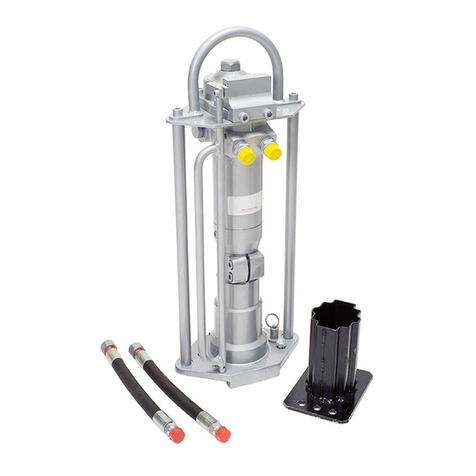
Greenlee
Greenlee Fairmont HPD-T instruction manual
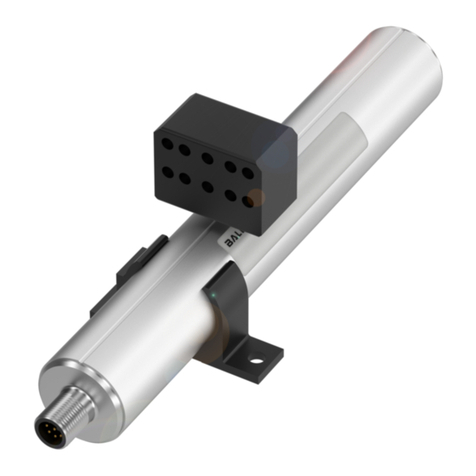
Balluff
Balluff BTL6-A/G Series Condensed guide

Allied Systems
Allied Systems SDN Installation maintenance and service manual
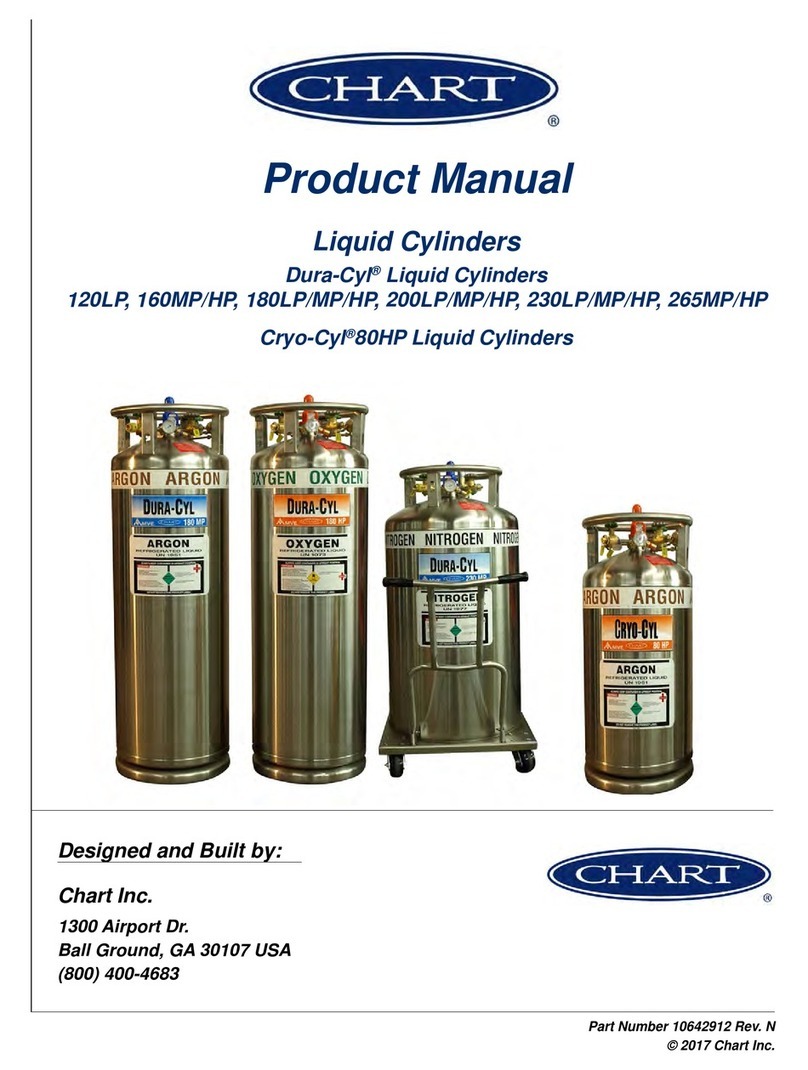
CHART
CHART Dura-Cyl 120LP product manual

Doosan
Doosan LPS LINE manual
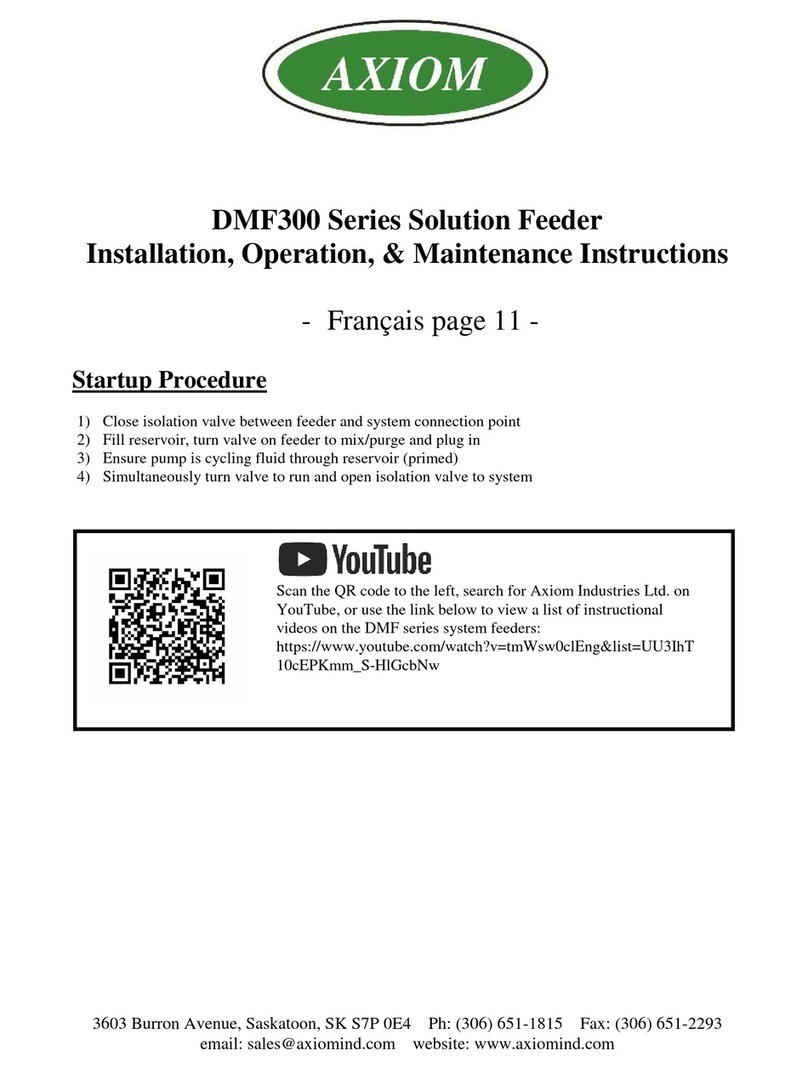
Axiom
Axiom DMF300 Series Installation, operation & maintenance instructions
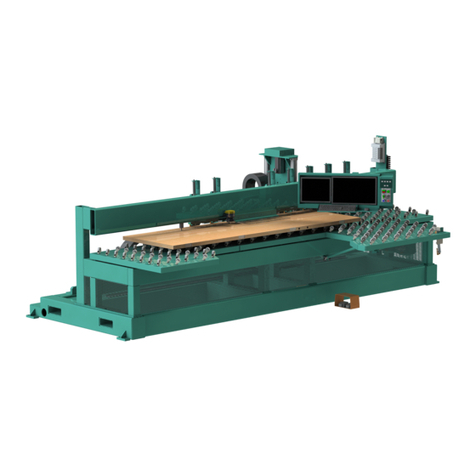
Kval
Kval EFX Operation manual
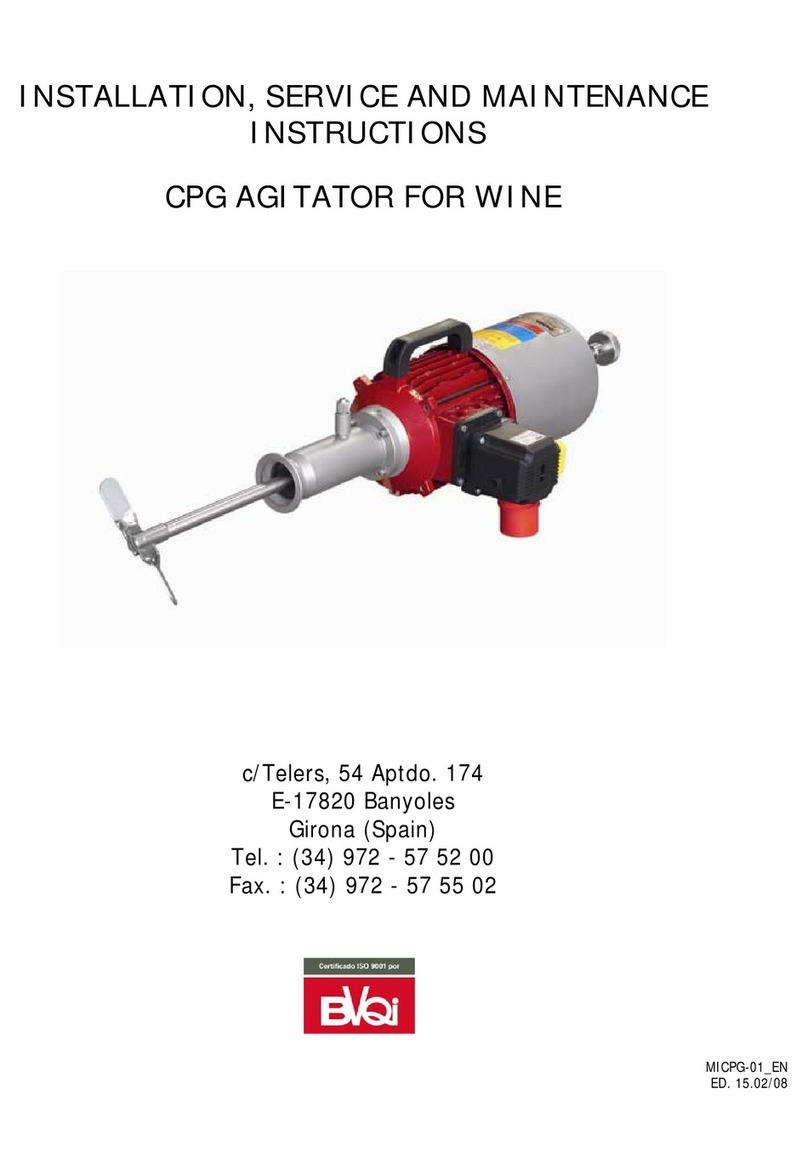
INOXPA
INOXPA CPG Series Installation, service & maintenance instruction

JJM Boiler Works
JJM Boiler Works CBM-227 Installation, operation and maintenance

Valley Sportsman
Valley Sportsman 1A-SS710 instruction manual

RSP
RSP STC20 Installation and Maintenance
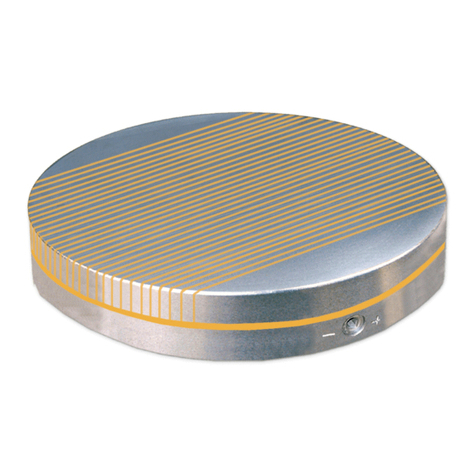
Sav
Sav 244.01 operating instructions
